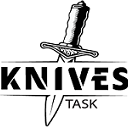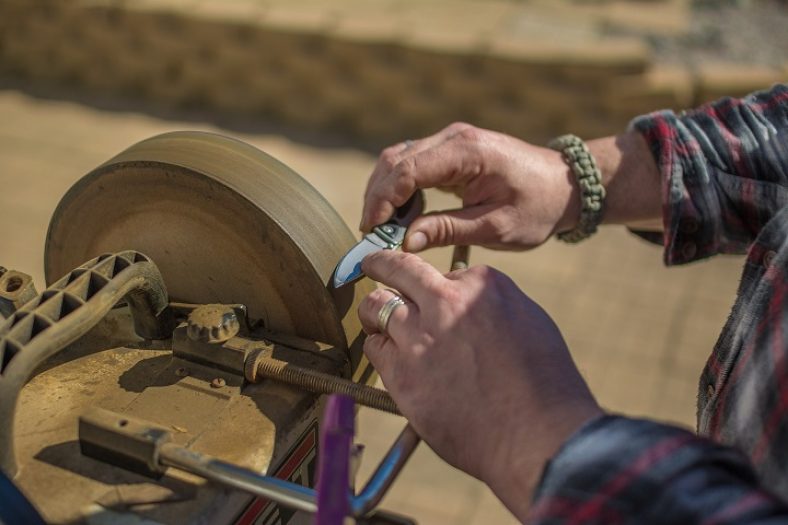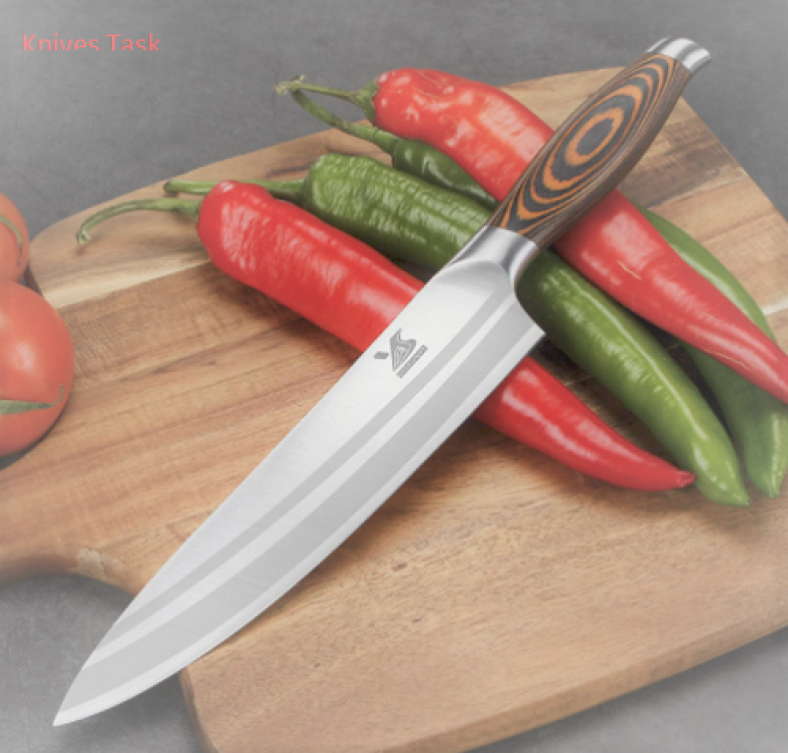Welcome to the ultimate guide on how to clean your Swiss Army Knife! As an everyday carry tool, your Swiss Army Knife is bound to accumulate dirt and debris over time. Regular cleaning and maintenance are essential to ensure that your knife remains in optimal condition and functions properly. In this comprehensive guide, we will walk you through the step-by-step process of cleaning and maintaining your Swiss Army Knife, along with tips and tricks to troubleshoot common issues.
Importance of Cleaning Your Swiss Army Knife
Cleaning your Swiss Army Knife is not just about keeping it looking good; it is crucial for its performance and longevity. Over time, dust, dirt, and grime can build up in the hinges and joints, causing the tools to become stiff and difficult to open. Regular cleaning removes these particles, allowing the blades and tools to move freely and function properly. Additionally, cleaning helps prevent rust and corrosion, which can damage the knife’s components and affect its overall performance.
Materials Needed for Cleaning
Cleaning Solution
To clean your Swiss Army Knife, you will need a mild cleaning solution. Warm water with a drop or two of dishwashing liquid is usually sufficient. Avoid using harsh chemicals or abrasive cleaners, as they can damage the knife’s components. If you encounter stubborn stains or marks, a small amount of solvent, such as rubbing alcohol, can be used sparingly on metal parts. However, be cautious when using solvents, as they can harm plastic handles.
Soft Cloth or Brush
A soft cloth or brush is essential for removing dirt and grime from the knife’s handle, blades, and tools. Use a cloth that won’t leave behind lint or debris to ensure a thorough cleaning. A toothbrush or a dedicated brush with soft bristles can also be useful for reaching into crevices and hard-to-reach areas.
Lubricating Oil
Lubricating oil is necessary to keep your Swiss Army Knife’s moving parts functioning smoothly and to protect them from rust. A high-quality knife oil or mineral oil is recommended. Avoid using WD-40 or other heavy-duty lubricants, as they may be too thick and can cause buildup or damage in the long run.
Step-by-Step Guide to Cleaning Your Swiss Army Knife
Disassembling the Knife
Removing the Blades and Tools
Before cleaning your Swiss Army Knife, it is important to remove all the tools that are not built into the knife itself. This includes the toothpick, tweezers, ballpoint pen, mini screwdriver, and any other detachable components. Clean these tools individually in warm, soapy water, making sure to dry them completely before reinserting them into the knife.
If your knife has electronic components, such as a USB drive, remove them before cleaning, as they are not waterproof. Also, remember to remove the battery to keep it dry during the cleaning process.
Cleaning the Individual Components
Once you have removed the blades and tools, you can focus on cleaning each component individually. Submerge the entire knife, excluding electronic parts, in a container of warm water or hold it under warm running water to remove dirt and grime. Gently swirl the knife in the water and open and close each implement to ensure thorough cleaning. Use a soft cloth or a gentle scouring pad to scrub away any stubborn dirt or smudges.
If necessary, you can use a mild dishwashing liquid to assist with the cleaning process. However, remember that less is more, and be cautious as excessive soap can make the tools slippery and harder to clean safely. Use the knife’s toothpick or a small brush to remove gunk and dust from hard-to-reach areas.
After cleaning, rinse the knife thoroughly under running water to remove any soap residue. Dry each component with a clean cloth and allow them to air dry completely before reassembling the knife.
Cleaning the Knife Handle
Removing Dirt and Grime
The handle of your Swiss Army Knife is prone to accumulating dirt and grime, especially around the joints and hinges. To remove surface grime, start by taking out all the removable components, such as the toothpick, pens, and needles. Rinse these components under hot tap water to remove any loose dirt.
Next, use the knife’s toothpick or a cocktail stick to scrape away the accumulated debris. Focus on clearing away the easily removable dirt, but don’t worry about achieving perfection at this stage.
Afterwards, wash the knife handle under hot tap water to remove any remaining dust or loose bits of dirt. Pay attention to the crevices and hinges, ensuring that you remove all visible dirt.
Polishing the Handle
If your Swiss Army Knife has plastic handles that have become dull or scratched over time, you can restore their shine by using a small amount of Flitz polish. Apply the polish to a microfiber cloth or a soft rag and gently rub it onto the handle, focusing on the areas with marks or scratches. Be sure to follow the manufacturer’s instructions for the polish and use it sparingly.
Cleaning the Blades and Tools
Removing Rust and Stains
If your Swiss Army Knife’s blades and tools have developed rust or stubborn stains, you can use a gentle solvent like rubbing alcohol to help remove them. Apply the rubbing alcohol sparingly to a cotton swab or soft cloth, and gently rub it on the affected areas. Be cautious not to apply the solvent on plastic handles, as it can cause damage.
Sharpening the Blades
After cleaning, it’s a good idea to sharpen the blades of your Swiss Army Knife to ensure optimal performance. Use a dedicated knife sharpener or sharpening stone following the manufacturer’s instructions. Remember to maintain a consistent angle while sharpening and keep the blade’s edge in contact with the sharpener or stone at all times.
Reassembling the Knife
Once all components are clean and dry, it’s time to reassemble your Swiss Army Knife. Carefully insert the blades and tools back into their respective slots within the knife handle, ensuring that they are properly aligned and secure. If your knife has electronic components, make sure they are completely dry before reinserting them and reinstalling the battery.
Maintaining and Storing Your Swiss Army Knife
Lubricating the Knife
Regular lubrication of your Swiss Army Knife is essential for smooth operation and protection against rust. To lubricate your knife, apply a drop of high-quality knife oil or mineral oil to the hinges where each tool connects to the frame. Open the implements and add a drop of oil to each moving part. Move each part back and forth, such as opening and closing each tool, to distribute the oil evenly into each hinge. If you encounter resistance even after applying oil, add more as needed or consider cleaning the joint more thoroughly.
Storing the Knife Properly
To prolong the life of your Swiss Army Knife, store it in a cool, dry place away from direct sunlight and moisture. Avoid storing the knife in damp or humid areas, as this can promote rust and corrosion. Keep the knife in a protective case or pouch when not in use to protect it from scratches and damage.
Troubleshooting Common Issues
Removing Stubborn Stains or Rust
If you encounter stubborn stains or rust on your Swiss Army Knife that cannot be removed by regular cleaning methods, you may need to resort to a specialized rust remover or metal polish. However, use these products sparingly and follow the manufacturer’s instructions carefully, as improper use can cause damage to the knife’s components.
Fixing Loose Blades or Tools
If your Swiss Army Knife’s blades or tools become loose over time, you may need to tighten the pivot screws holding them in place. Use a small screwdriver or the appropriate tool to gently tighten the screws until the blades and tools are secure. Be cautious not to overtighten the screws, as this can cause damage or make the tools difficult to open.
Q: What do I need to do to clean a Swiss Army knife?
A: To clean a Swiss Army knife, you will need warm water, soap, a toothbrush, a soft cloth, and possibly some isopropyl alcohol.
Q: How do I start cleaning my Swiss Army knife?
A: Step 1 is to submerge the entire knife in warm, soapy water.
Q: What is Step 2 in cleaning my Swiss Army knife?
A: Step 2 is to use a toothbrush to clean the knife blades and any other tools like scissors or tweezers.
Q: What should I do for Step 3 in cleaning my Swiss Army knife?
A: Step 3 is to rinse the knife under running water and dry it with a soft cloth as much as possible.
Q: What is Step 4 in cleaning my Swiss Army knife?
A: Step 4 is to oil your Swiss Army knife. Place your knife on a soft cloth and put a few drops of oil on the blade and the inside of the knife. Use a toothbrush to spread the oil evenly.
Q: Do I need to clean the inside of the knife as well?
A: Yes, you need to clean the inside of the knife including its hinges to ensure that it functions properly.
Q: Is it necessary to oil my Swiss Army knife after cleaning it?
A: Yes, oiling your knife is an essential step in servicing your knife. It helps to protect and lubricate the blade and other moving parts.
Q: How do I dry my Swiss Army knife properly?
A: Use a soft cloth to dry your Swiss Army knife as much as possible, and then leave it in a well-ventilated area to air dry completely before using it again.
Q: How often should I sharpen my Swiss Army knife?
A: You should sharpen your knife regularly, depending on how often you use it. A good rule of thumb is to sharpen it after every 3-4 uses.
Q: Is it possible to damage the knife while cleaning it?
A: Yes, if you use too much force or the wrong kind of cleaner, you could potentially damage the knife. Always be gentle and use only mild soap and water or isopropyl alcohol.
Conclusion
Final Tips for Keeping Your Swiss Army Knife Clean and Functional
In conclusion, cleaning and maintaining your Swiss Army Knife properly is crucial for ensuring its longevity and performance. By following the steps outlined in this blog post, you can keep your Swiss Army Knife in optimal condition and ready for any challenge that comes your way. Please remember to disassemble the knife, clean each component individually, polish the handle if necessary, and lubricate the moving parts with oil. Store your knife properly and address any issues promptly to ensure its continued functionality. With regular care and maintenance, your Swiss Army Knife will remain a reliable tool for years to come.
Please, never put your Swiss Army Knife in the dishwasher or use bleach, as these can damage the knife’s components. Avoid using harsh abrasives like sandpaper or rust remover, as they can scratch or corrode the metal. Instead, stick to mild cleaning solutions, soft cloths or brushes, and dedicated knife oils for the best results.
Now that you have the knowledge and tools to clean your Swiss Army Knife effectively, it’s time to give your trusty companion the care it deserves. Happy cleaning!





